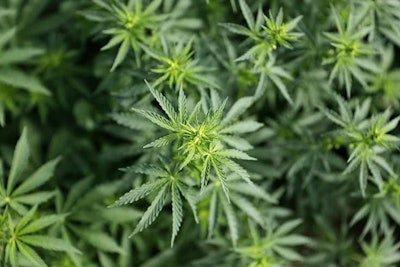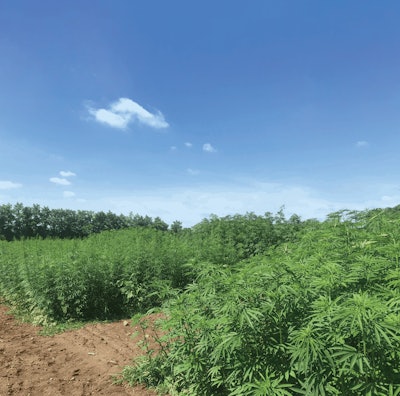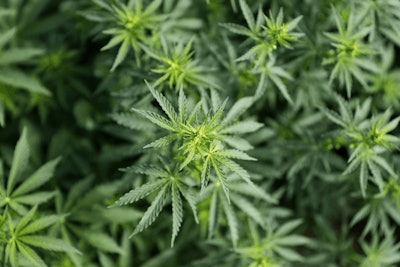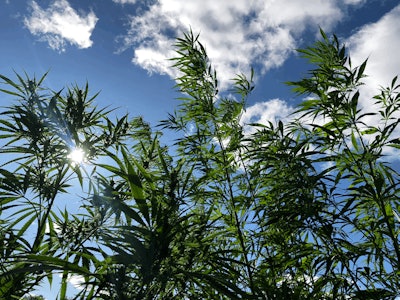

Harvest time: It’s arguably the most laborious part of hemp farming. After a successful growing season, when nature is on your side and the hemp harvest goes smoothly, successful and bountiful yields will follow. However, a farmer can go wrong in many places during the harvest process—whether they’re growing for cannabidiol (CBD), grain or fiber—and no one wants their hard work from the growing season to be for naught. To avoid some of the most common pitfalls hemp farmers face during harvest, Hemp Grower has curated harvest and post-harvest (including marketing) tips from industry experts for the final installment of this special “Step Up Your Growing Game” tips series.
Meet the Experts
Headshots courtesy of respective subjects

CARL DULEY
Buffalo County Agriculture Extension Educator, University of Wisconsin-Madison
Duley’s concentration for the past 30 years as an agriculture agent at UW-Madison has been on small grains, malting barley and oats; however, his foray into hemp production began in 2018 in Wisconsin’s Buffalo County with three-quarters of an acre and one dual-purpose (fiber and grain) hemp variety.

JANNA BECKERMAN, Ph.D.
Professor, Botany and Plant Pathology, Purdue University
Beckerman is an extension plant pathologist at Purdue University with a concentration in specialty crops (any crop in Indiana besides corn, beans or wheat). Her team has been growing hemp since 2014 and has partnered with several Indiana farmers for research through the U.S. Department of Agriculture (USDA) and the state’s hemp program. Beckerman and her team’s research in hemp has been published by the American Phytopathological Society as well as Elsevier’s Crop Protection.

JEFF KOSTUIK
Director of Operations, Hemp Genetics International (HGI)/Hemp Production Services (HPS)
Kostuik spent 20 years as an agronomist and hemp contact for the government of Manitoba before joining HGI/HPS, Canada’s largest Canadian-owned bulk hemp supplier, in 2015. His mission is to continue the company’s decades-long pedigreed seed line and explore opportunities in CBD-rich varieties.

MARTY MAHAN
Hemp Farmer/Chapter President, Midwest Hemp Council (MHC)
Mahan is a fifth-generation farmer based in Rush County, Ind., where he grows corn, soybeans and hemp on approximately 200 acres. At MHC, he advocates for hemp nationwide and educates farmers and legislators on hemp farming and the industry’s challenges. Mahan has been growing hemp for research and production since the passage of the 2014 Farm Bill.

LUKE ZIGOVITS
Owner and Farm Manager, Higher Level Organics LLC
Zigovits’ Wisconsin-based farm is a USDA Organic-certified and Sun+Earth-certified operation. With more than 20 years of cultivating and breeding as well as traditional crop agriculture experience, Zigovits’ focus in hemp is to promote regenerative practices and advance the breeding of CBD hemp to include cultivars of various chemical compositions.

1. Check for seed color when harvesting.
When harvesting grain hemp crops, it’s important to remember not to harvest too late. “If you start seeing a whole lot of brown seed covers out there, you’re getting late already,” Duley says. “It’s pretty green when we’re harvesting it.” Shatter, or seeds falling on the ground, is a sign that farmers may be harvesting too late.
2. After harvesting grain, make sure the crop gets airflow.
Farmers should expose their grain harvest to air “almost immediately,” Duley says, whether it’s stored in a bin or another container. “If it sits in a bin very long—and I’m talking a matter of a couple hours—without getting air on it, it’s going to start to heat and spoil,” he adds. Duley also recommends avoiding temperatures of more than 100 to 105 degrees Fahrenheit and keep moisture levels to about 10%. This is especially of note in regions where humidity is high, such as in the Midwest.

3. Build strong relationships with the labor force.
Just as it’s beneficial to build good relationships with suppliers, customers and neighboring farmers, establishing relationships with the harvesting workforce will benefit a farmer’s operation in the long run, Beckerman says. “In my experience in specialty crops, the growers who have been most successful with their labor have treated their labor well so that their labor returns year after year,” she says. That means, especially in light of the COVID-19 pandemic, keeping workers safe: making sure to keep people 6 feet apart at minimum, encouraging face masks and wearing gloves, Beckerman says. She adds that gloves provide multiple layers of protection: “They protect the worker from the plant, and they protect the plant from the worker, and they protect, hopefully, people from everyone else—assuming they’re not touching their face.”

4. Protect equipment by harvesting on time.
When the pectin and lignin in the plant stalks are still strong and holding the fibers together, the crop may be a little higher in moisture, but the fibers have less of a chance of becoming weaker and drier and being more prone to wrapping around conventional harvesting equipment, such as a combine, Kostuik says. He adds that fiber wrapping can cause valuable equipment to not only break but also retain heat and, in extreme cases, catch fire.
5. Create a plan for crop rotation.
After farmers harvest their hemp, they should plan to grow another crop on that land. “The biggest proactive thing you can do is make sure you have a proper rotation,” Kostuik says. “Mother Nature just doesn’t like you seeding hemp after hemp and hemp.” He adds that without crop diversity, disease pressure can start to mount.
“We really strive for a three- to four-year rotation before we come back with that same crop in that same field,” Kostuik says. “In the 8,000 acres, we might have a quarter of the acres in wheat the first year, and whatever was seeded in wheat would then be seeded in canola, and then into hemp, or soybeans, or a pulse crop of some type that helps build soil nitrogen.”
Kostuik urges caution, however, when following wheat in particular. “[Hemp] is a gluten-free product,” he says. “Sometimes it can be very difficult to clear the wheat out from the hemp. So if you have too much wheat, you lose your gluten-free status, and it’s much more difficult to market.”


6. Consider the switch to organic.
“Many of us see hemp as a huge benefit to the organic farming world,” Mahan says. This is for not only those with existing organic farms, but also those who want to convert to organic. The limited ability to use herbicides and pesticides for hemp is one reason farmers like Mahan are looking to switch. “Hemp would give me something to plant … [without] using any herbicides,” he says, which provides a more compelling case for following that through the rest of his rotations.
7. Harvest when you see 20% flower development.
Mahan says hemp grown for fiber is typically a 90- to 100-day crop. But it’s not as simple as harvesting within that 10-day window. He suggests harvesting when about 20% of plants begin flowering. This will help keep the stalks in a better state for mechanical harvesting and keep the plants in a better state for retting, drying and storing. For harvesting, he suggests using a plain sickle bar instead of a hay cutter (or a combine) because it has fewer rotating parts that the fiber can wrap around.
8. Tap into the artistry of retting.
Retting—which occurs when water breaks down the hemp fiber’s (also called bast) pectin and lignin—can be done either outdoors after the fiber is cut down (dew retting), or, in some cases, packed up and taken to a facility where it’s submerged in water tanks (water retting). Mahan says most farmers will likely opt for dew retting to avoid additional production costs. In this case, they’ll leave the crop out in the field and flip it over once after a period of moisture (caused by either dew or rain) to distribute the water evenly. However, Mahan notes that farmers still have much to learn about the retting process—including exactly how to time it—so he encourages information sharing on the topic. He adds that processors may be able to guide farmers in the process as well.
9. Plan for fiber storage.
After retting, hemp needs to be baled and stored. “[It] has to be stored indoors. You’ve got to keep it out of the elements, so that could potentially be a challenge to some farmers,” Mahan says. To avoid issues, farmers need to plan for how much they’re going to store and for how long. “Anybody that’s ever raised livestock typically has a hay barn on their site, so they’ve got a place to store it—but if it’s a new farmer that’s looking to get into it, they need to be able to deliver it to their processor right away or have a place to store it temporarily.”


10. Consider planting a cover crop.
A cover crop can serve to suppress weeds and deliver nutrients to the soil and hemp plants, says Zigovits. “The earth wants to cover itself. So, if you leave a field [vacant] that’s been worked down in the fall, you’re going to have weed issues in the spring,” he says.
Zigovits plants Dutch white clover as his cover crop. “We disk or plow that clover in the spring. That adds the organic material to the soil for the soil microbes to eat and provides fertility,” he says, adding that his clover plants are a major (and natural) nitrogen source.
11. Harvest for compliance and higher profit margins.
Zigovits, who grows hemp for CBD, says hemp plants left in the ground too long will eventually surpass the federal legal 0.3% tetrahydrocannabinol (THC) limit, so farmers should know their ideal harvest window. Understanding that window is not as cut and dry as it can be for more traditional crops, like corn, for example, which has a fairly standard 88-day harvest window, he adds. Hemp harvest windows can very much depend on the climate and the varietal itself.
Sometimes if growers wait too long to harvest their crops, the crop could go hot (i.e., exceed the legal THC threshold), Zigovits says.
To better understand hemp’s harvest window, especially when growing for cannabinoids, it’s important to focus on the data versus visually determining the plants’ maturation. “A major pointer for new farmers would be to do their own personal, in-field, third-party analytical [cannabinoid] testing to find out the harvest window for the cultivar that they’re growing,” he says, adding that the upfront cost will be well worth it to avoid being forced by a state agriculture department to destroy the hemp.














